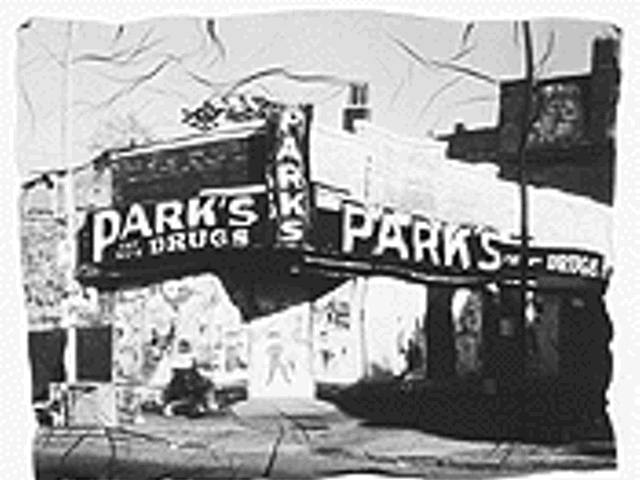Historyonics Theatre Company celebrates this bygone art form in their boffo new revue, Always Leave 'em Laughing: The Rise and Fall of Vaudeville, which continues this weekend at 8 p.m. Oct. 1-2 and 2:30 p.m. Oct. 3. Creatively staged by company artistic director Lee Patton Chiles and written by screenwriter Brian Hohlfeld from memoirs, news items, letters and other historical ephemera, every word spoken onstage originally appeared elsewhere. Even without such fidelity to original documentation, Historyonics would be a unique theatrical venture, and, frankly, any project that packs hundreds of folks into the local historical society gets a standing O from this department.
Happily, the performing quality is high indeed, unlike actual vaudeville, which had as many dog acts as acts with dogs. And acts with stars. Mainstays of American showbiz like the Marx Brothers, Buster Keaton, Fred and Adele Astaire, Jack Benny, George Burns and Gracie Allen, and Fanny Brice (all depicted here) cut their performing chops on 12 shows a day. At one point, every town in America had a vaudeville house, and the principle was simple: You paid your dime or quarter, went inside and stayed as long as you liked. Of course, after a certain time, the acts would start repeating, at which point the audience would voluntarily turn over.
The Historyonics quartet — Dean Christopher, Kari Ely, Christopher Hickey and Rosemary Watts — is versatile. When presenting exposition or description, the actors are "on book," but when singing or reproducing actual routines, the scripts are left behind. The upstage portion of the playing area is set off as an actual vaudeville stage, complete with footlights and artists' board on which title cards are placed. Stage right is occupied by pianist Joe Dreyer, whose trills and arpeggios on the known and obscure material ("Abadaba Honeymoon," anyone?) are energetic and authentic.
The evening is structured just the way "classic" vaudeville was presented, and helpfully explained. Opening acts were usually pantomime — as people were chatting and finding seats, why compete? The second act was traditionally a singing or dancing duet. Christopher and Ely as Fred and Adele Astaire tell a sad and silly story of their first showbiz firing — back then, the brother/sister act hadn't worked out the dancing thing.
Then came a short play, frequently with a "high-toned" theme to uplift the audience. (N.B.: Vaudeville was family entertainment and should not be confused with burlesque or striptease, which featured male comics in baggy clothes and female dancers in rather less.) Laughing presents Antony and Cleopatra (well, the part that audiences want — the death scene). Christopher, a flexibly featured actor, does a brilliantly comic suicide that was both absurdly prolonged and lightning-timed.
The fourth act on the bill was designed to "wake the audience up." Hickey portrays Buster Keaton and sensitively narrates his saga with the Gerry Society (later the Society for the Prevention of Cruelty to Children). Keaton was 5 when he was added to the family act, which was basically knockabout domestic comedy in which the future film genius was handled "like a mop." The pathos of Hickey's delivery, "My father was arrested 182 times," is quietly dignified. (This story also serves as the first-act closer, which traditionally had some teeth, so the audience had conversation fodder for intermission.)
The delights of Historyonics' production include many quaintly tuneful period ditties like "Bird in a Gilded Cage." That was buxom beauty Lillian Russell "s signature tune. Watts (usually in comic parts) warbles with wrenching precision. The troupe also has uncannily accurate mimics (Christopher and Watt's George and Gracie are tone-perfect, for example). Finally, Historyonics explains that vaudeville changed form when movies arrived, and the old 12-show-a-day houses began to shift function. Radio gathered up as many performers as film, and then television gave the old hoofers and tummelers another audience. And the irony is, of course, that vaudeville is not dead. The Reduced Shakespeare Company — which performed this past weekend — and Flying Karamazov Brothers, for example, are two splendid acts that tip a porkpie hat or toss a juggler's baton in vaudeville's direction. Granted, they're not preceded by sister act Worth and While, or the musical cow-milkers, or the guy who swallows goldfish and baby sharks, but still ....





